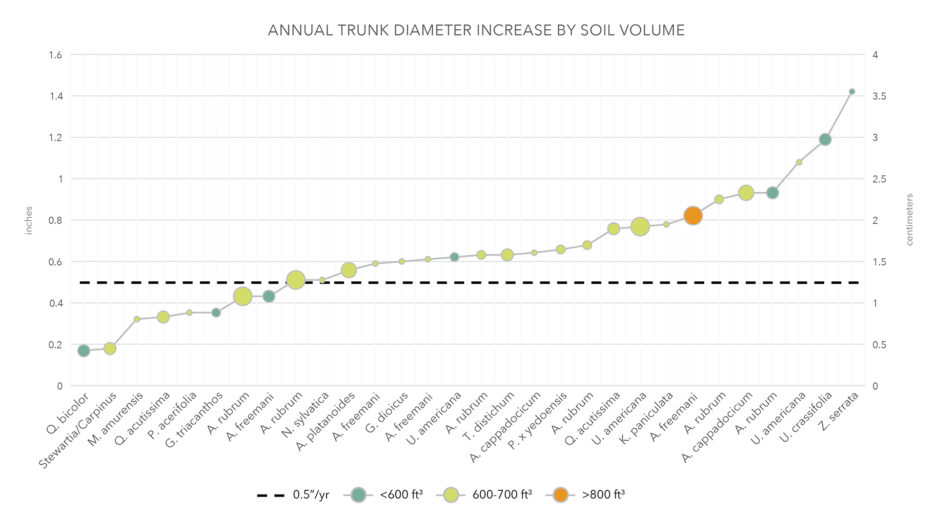Green utilities like soil, trees, and water can provide a high level of ecosystem services while creating a more livable urban environment for people, but designing spaces that satisfy the needs of both natural and built systems can be a challenge. The abundance of paved surfaces often leaves urban trees with limited access to poor-quality soil that limits growth. DeepRoot developed the Silva Cell, a modular suspended pavement system for containing unlimited amounts of healthy soil beneath paving while supporting traffic loads and accommodating surrounding utilities, to help solve this challenge. By combining on-site stormwater management with expanded rooting volumes, Silva Cells provide an opportunity to grow large, healthy trees and restore ecological function, even in dense urban environments.
In order to document the growth and performance of trees in Silva Cells, and to validate our own approach to designing for both trees alone and trees-and-stormwater in combination, we undertook a research and monitoring study of 10 Silva Cell projects across North America. At the time of data collection it had been eight years since the first commercial Silva Cell installation – long enough to have built a great variety of projects – allowing us to assess tree performance and to compile lessons and best practices to guide future efforts. In this time, approximately 1,000 installations have been constructed. We estimate that those projects include more than 18,000 trees.
Silva Cells advanced the available methods for providing rooting space under pavements by making larger volumes of good horticultural soil available to the tree. The space efficiency of the structure means that less space is required in order to provide target soil volumes, and the design accepts a wide range of soil types that are at optimum compaction for root growth. But how well do the trees grow when compared to open-grown trees (trees growing on wide spacing with little canopy competition) in similar soil? This study examined nearly 400 trees that had been in the ground between two and six years to see how well they have grown relative to open-grown trees of similar species in good soil environments not surrounded by pavement.
The results are laid out by:

Based on the data from the above projects, it appears that trees growing in Silva Cells perform very well in terms of visual health indicators and annual growth. 82% of trees in the study were given a health rating of either “excellent” or “good.” This is especially notable given the large sample size, the variety of species, climates, and maintenance regimes, and the difficult conditions faced by urban trees.
Silva Cells primarily serve to protect soil from compaction, a major constraint to tree growth as indicated by Coder (2007). This study shows that Silva Cells improve tree performance in urban areas across a wide range of climates, regions, and tree species.